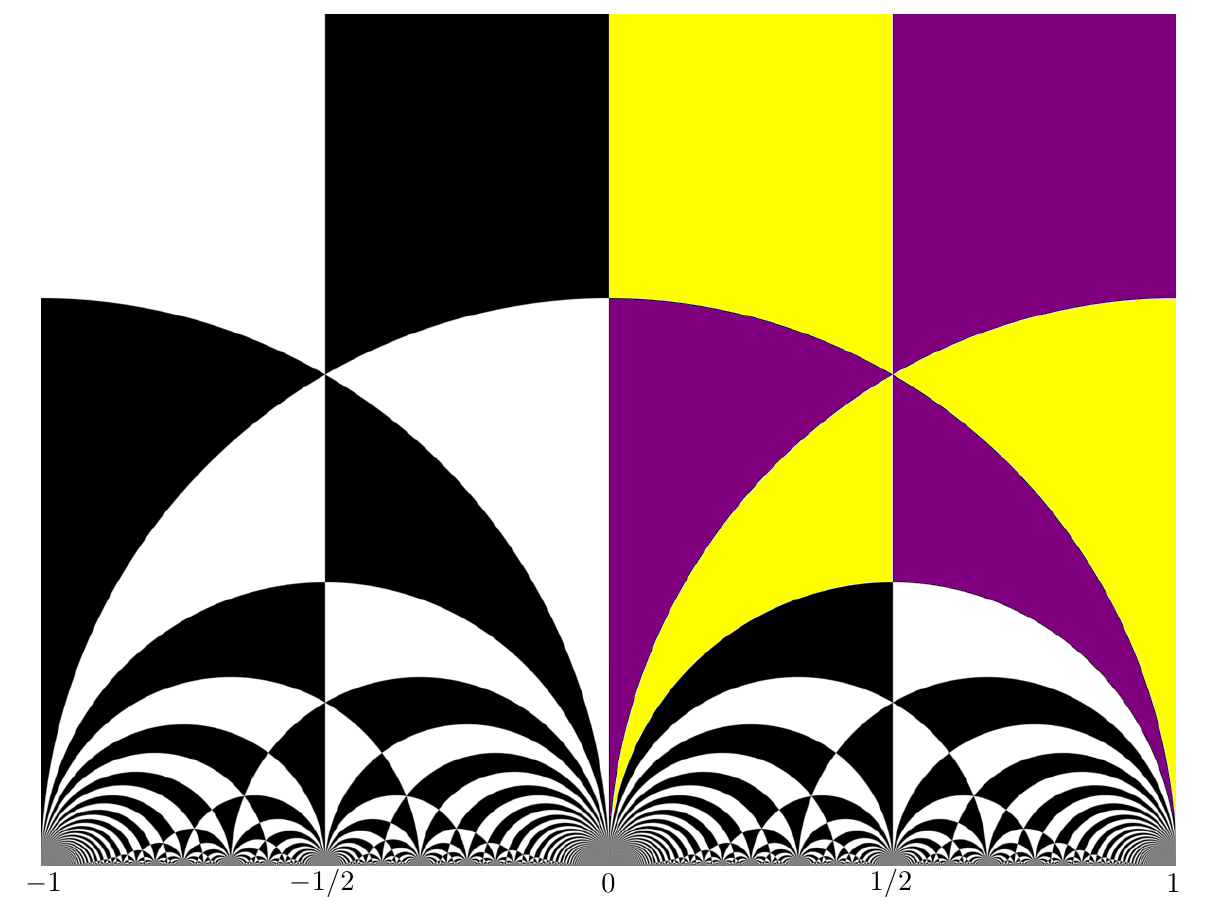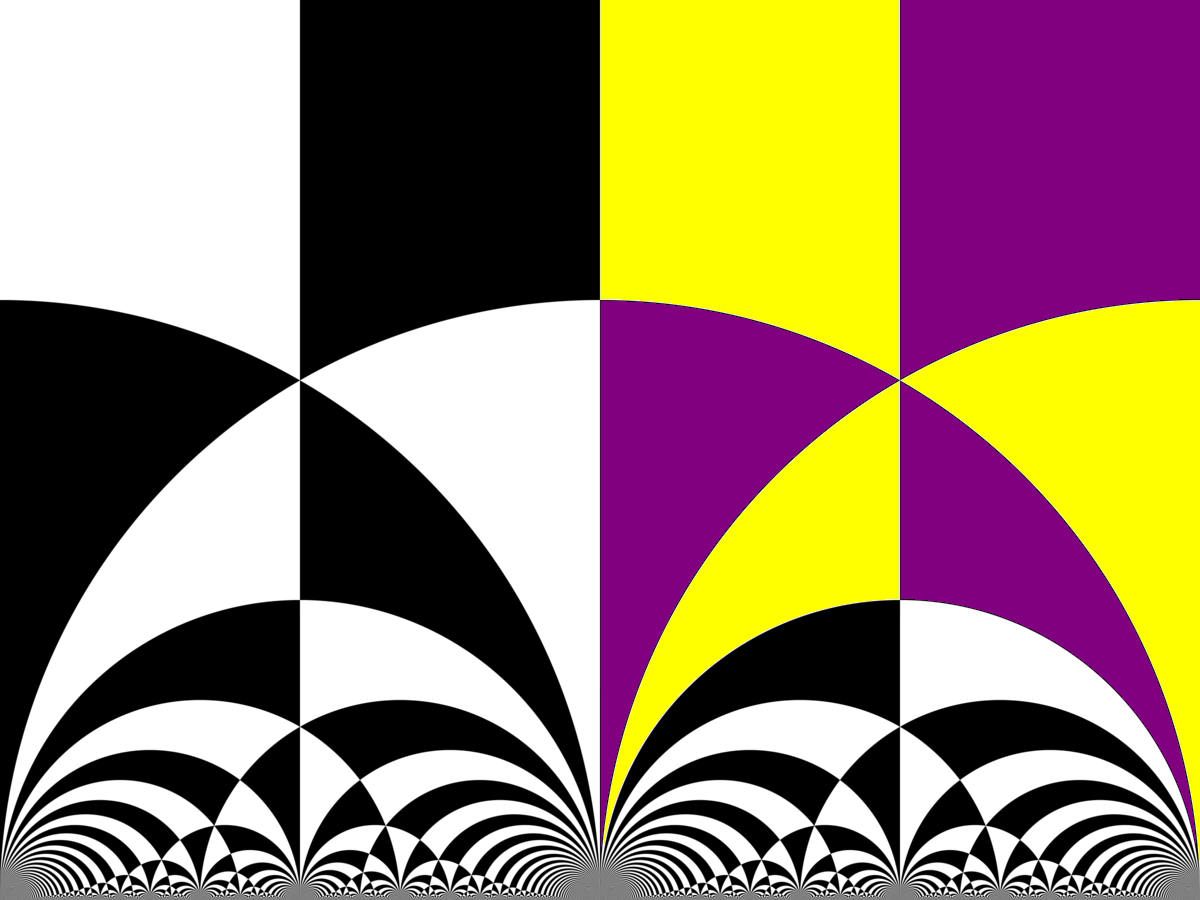The Moduli Space of Acute Triangles
Posted by John Baez
I wrote a little article explaining the concept of ‘moduli space’ through an example. It’s due October 1st so I’d really appreciate it if you folks could take a look and see if it’s clear enough. It’s really short, and it’s written for people who know some math, but not necessarily anything about moduli spaces.
The cool part is the connection between the moduli space of acute triangles — that is, the space of all shapes an acute triangle can have — and the more famous moduli space of elliptic curves.
There’s a lot more one could do with this, e.g. describing the modular lambda function as the cross ratio of the 4 points on a sphere obtained by taking an acute triangle, dividing it into 4 similar acute triangles, and folding it up to form a tetrahedron, which is conformally equivalent to a sphere. But I didn’t have space for that here!
Okay, here goes.
The moduli space of acute triangles

In mathematics we often like to classify objects up to isomorphism. Sometimes the classification is discrete, but sometimes we have a notion of when two objects are ‘close’. Then we can make the set of isomorphism classes into a topological space called a ‘moduli space’. A simple example is the moduli space of acute triangles. In simple terms, this is the space of all possible shapes that an acute triangle can have, where we count two triangles as having the same shape if they are similar.
As a first step, consider triangles with labeled vertices in the complex plane. Every triangle is similar to one with its first vertex at , the second at , and the third at some point in the upper half-plane. This triangle is acute precisely when its third vertex lies in this set:
So, we say is the moduli space of acute triangles with labeled vertices. This set is colored yellow and purple above; the yellow and purple regions on top extend infinitely upward.
To get the moduli space of acute triangles with unlabeled vertices, we must mod out by the action of that permutes the three vertices. The 6 yellow and purple regions in are ‘fundamental domains’ for this action: that is, they each contain exactly one point from each orbit. If we reflect a labeled triangle corresponding to a point in a yellow region we get a triangle corresponding to a point in a purple region, and vice versa. Points on the boundary between two regions correspond to isosceles triangles. All 6 regions meet at the point that corresponds to an equilateral triangle.
The moduli space of acute triangles is closely related to a more famous moduli space: that of elliptic curves. The group , consisting of invertible integer matrices, acts on the upper half-plane
as follows:
The light and dark regions shown above are fundamental domains for this group action. Elements of with determinant map light regions to dark ones and vice versa. Elements with determinant map light regions to light ones and dark ones to dark ones. People more often study the action of the subgroup consisting of with determinant 1. The union of a light region and a dark one, touching each other, forms a fundamental domain of .
For any point we can form a parallelogram with vertices and . If we identify the opposite edges of this parallelogram we get an elliptic curve: a torus equipped with the structure of a complex manifold. We can get every elliptic curve this way, at least up to isomorphism. Moreover, two points in the upper half-plane give isomorphic elliptic curves iff for some . Thus the quotient space is the moduli space of elliptic curves: points in this space correspond to isomorphism classes of elliptic curves.
Since is the union of three fundamental domains for , there is a map
from the moduli space of acute triangles to the moduli space of elliptic curves, and generically this map is three-to-one. This map is not onto, but if we take the closure of inside we get a larger set
whose boundary consists of points corresponding to right triangles. Then extends to an onto map
The existence of this map suggests that from any acute or right triangle in the plane we can construct an elliptic curve, in such a way that similar triangles give isomorphic elliptic curves. This is in fact true! How can we understand this more directly?
Take any acute or right triangle with labelled vertices in the complex plane. Rotating it 180° around the midpoint of any edge we get another triangle. The union of these two triangles is a parallelogram. Identifying opposite edges of this parallelogram we get a torus with a complex structure — and this is an elliptic curve! There are three choices of how to build this parallelogram, one for each edge of the original triangle, but they give isomorphic elliptic curves. Also, similar triangles give isomorphic elliptic curves. Even better, every elliptic curve is isomorphic to one arising from this construction. So this construction gives a map from onto , and with a little thought one can see that this map is .
I learned about the moduli space of acute triangles from James Dolan. There has also been interesting work on the moduli space of all triangles in the plane. Gaspar and Neto [2] noticed that this space is a triangle, and Ian Stewart later gave a more geometrical explanation [3]. In fact all the moduli spaces mentioned here are better thought of as moduli ‘stacks’: stacks give a way to understand the special role of more symmetrical objects, like isosceles and equilateral triangles. Kai Behrend [1] has written an introduction to stacks using various moduli stacks of triangles and the moduli space of elliptic curves as examples. Though he does not describe the map (or its stacky analogue), his work is a nice way to dig deeper into some of the material discussed here.
References
[1] K. Behrend, An introduction to algebraic stacks, in Moduli Spaces, eds. L. Brambila-Paz, P. Newstead, R. P. Thomas and O. García-Prada, Cambridge U. Press, Cambridge 2014, pp. 1–131. Also available at https://secure.math.ubc.ca/~behrend/math615A/stacksintro.pdf.
[2] J. Gaspar and O. Neto, All triangles at once, Amer. Math. Monthly 122 (2015), 982–982.
[3] I. Stewart, Why do all triangles form a triangle?, Amer. Math. Monthly 124 (2017), 70–73.


Re: The Moduli Space of Acute Triangles
In the first display, don’t you mean ?